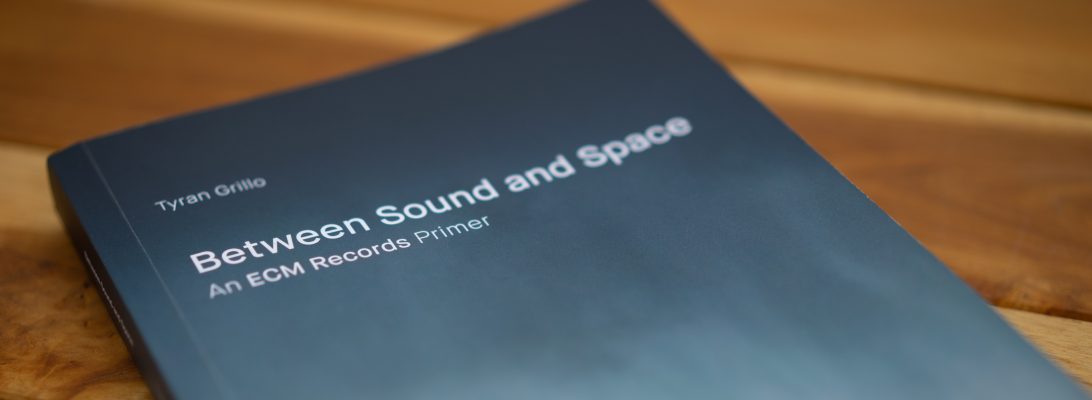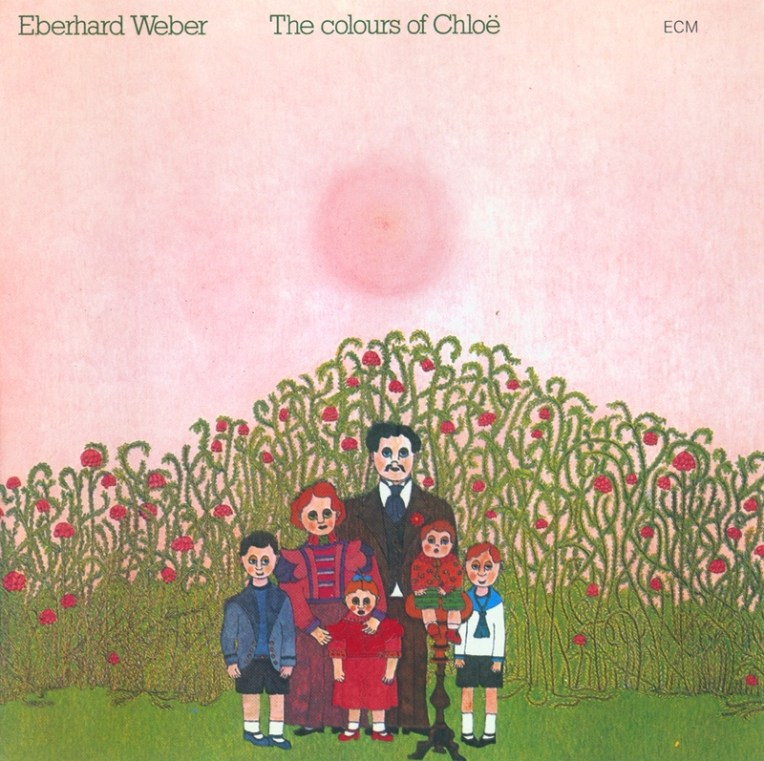Eberhard Weber
The Colours of Chloë
Eberhard Weber bass, cello, ocarina
Rainer Brüninghaus piano, synthesizer
Peter Giger drums, percussion
Ralf Hübner drums
Ack van Rooyen fluegelhorn
Cellos of the Südfunk Symphony Orchestra Stuttgart
Recorded December 1973 at Tonstudio Bauer, Ludwigsburg
Engineers: K. Rapp and M. Wieland
Produced by Manfred Eicher
Listening to an Eberhard Weber album, one can always count on an immersive experience. This is especially true in his first as frontman. From its enigmatic title and charming cover to its fine musicianship and well-conceived instrumentation, The Colours of Chloë remains an ECM classic and may just be the perfect introductory album for those looking to know why the label was so influential even in its infancy. In a span of 4 compositions and 10 times as many minutes Weber produces a veritable mélange of flavors, textures, and, of course, colors. On that note, “More Colours” gives us just that as Weber’s bass cuts a slow swath of orchestral goodness. The title track features an ethereal ocarina* that swirls into a resplendent piano solo from longtime Weber collaborator Rainer Brüninghaus. “An Evening With Vincent van Ritz” draws from the same palette as the first track, but soon breaks into a run with some inspired drumming and a stellar fluegelhorn solo by Ack van Rooyen, while “No Motion Picture” reprises the spacey feel of the title track and shows Weber at his most profound. Not to be forgotten, Brüninghaus also has some breathing room here and provides some of the more transcendent moments in this all-too-brief journey.
Although a glance at the cover art or lineup may not exactly cry “Jazz!” Weber knows where he and his instrument stand. The music is firmly rooted in the genre’s orthodox structural standby: i.e., a solid thematic framework with plenty of room for improvisation along the way. While compositionally astute, Weber’s greatest strength is his “eye” for sound. His feel for blending instruments is highly idiosyncratic and backed by an obvious passion for music-making. His distinctive combination of bass, piano, percussion, horns, and strings is such that no one instrument or group is ever dominant for too long. Each musician is only as good as his altruism toward the ensemble as a whole. That being said, one cannot help but marvel at Weber’s signature sound at the heart of it all, or at his uncanny playing that walks the line between affirmation and mourning. This album is not to be missed.
*Thanks to Rasmus Sylvester Bryder for this correction.
<< Jan Garbarek: Witchi-Tai-To (ECM 1041)
>> Bennie Maupin: The Jewel In The Lotus (ECM 1043)



Make no mistake, this is a fabulous album but I’ve always wondered why so many people view The Colours of Chloe as Weber’s very greatest. I consider Yellow Fields, Silent Feet, Later That Evening, and Pendulum all to be more cohesive and superior albums, with The Colours of Chloe remaining a fascinating, entertaining-but-experimental label debut.
The more I listen to Yellow Fields, Silent Feet, and Later That Evening, I find that they reach farther and deeper than Chloë, while also maintaining a sense of groundedness that the latter often lacks and which strikes me differently depending on my mood. By the same token, there’s really nothing else quite like the breath of fresh air that one cannot help but breathe in once “Touch” comes through the speakers.
Yes, Yellow Fields is resplendent with both joy and edginess. You mentioned the opening bits of Touch: there’s also Charlie Mariano’s eastern horns over Bruninghaus’ liquid Rhodes, propelled by Christensen’s crackling percussives on Sand-Glass; the piano break on Left Lane into Weber’s bass solo and ostinato, into Mariano’s triumphant return and the near dissonant melting outtro. It’s my favorite work from Weber’s formidable canon.
To comment on the above posts, the other albums may be more cohesive, I haven’t really noticed any big differences between Chloë and the others. More than anything, I think that Chloë trumps them all by its sheer sound. Later Weber releases have an at the very least slightly clearer sound than Chloë, even releases such as Fluid Rustle and The Following Morning – this album has such a perfect, foggy, fairytale-mysterious “if the Peanuts theme was written in a Bavarian castle” mood to it that I can’t help but be transformed entirely to a different place when I listen to it. Also, “The Colours of Chloë” is so haunting, it sounds like if nature was dancing… but I digress. I do think Chloë is his best album, but I would recommend just about anything I’ve heard by him – Chloë wouldn’t be near as good if it weren’t for Weber’s amazing compositions.
By the way, there is no synthesizer in the front of the mix on “The Colours of Chloë” – it’s the ocarina that Weber is credited for that I think you mean. It reappears on “No Motion Picture”.
A staggeringly beautiful record. After being introduced to ECM through The Köln Concert (what else), this was the first record on the label that took my breath away and made my decide with certainty that I was definitely going to explore deeper. A favourite to this day.